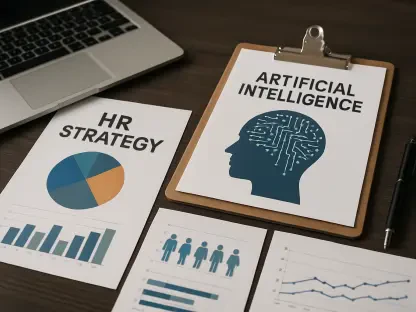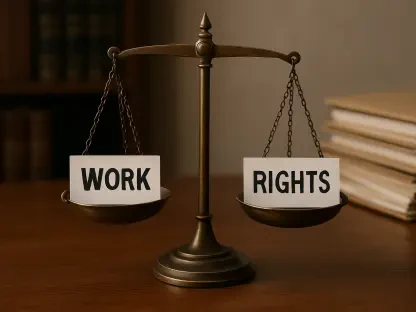In today’s interview, we have Sofia Khaira, an expert in diversity, equity, and inclusion, sharing insights on the intricate dynamics of political and economic decisions shaping the U.S. Sofia offers her perspective on President Trump’s recent tax proposal and how it intertwines with broader legislative and party priorities. Her expertise helps unravel the complexities behind the Republican Party’s maneuvers, pressures from the MAGA base, and possible implications for key social programs.
Can you explain the reasons behind President Trump’s suggestion to raise the top tax rate for high earners?
President Trump’s suggestion to raise the top tax rate can be seen as a strategic move to address concerns about national debt and the funding of middle and working-class tax cuts. By proposing an increase for high earners, Trump aims to gather additional revenue, potentially safeguarding essential programs like Medicaid, and appealing to his populist base that supports higher taxes on the wealthy.
How does President Trump’s proposal align with the priorities of the Republican-controlled House?
The proposal presents a challenging alignment with the priorities of the Republican-controlled House, which traditionally favors lower taxes and spending cuts. The tension arises with President Trump’s populism pushing for tax hikes on the wealthy, contrasting the fiscal conservatism that typically defines Republican economic strategies. Finding common ground amidst these conflicting priorities remains a complex task.
What are the specifics of Trump’s plan regarding tax rates for individuals and joint filers?
Trump plans to raise the top tax rate from 37% to 39.6% for individuals earning $2.5 million or more and joint filers making $5 million. This increase aims to compensate for other proposed tax reductions, such as eliminating taxes on tip income, overtime pay, and Social Security benefits, targeting a broader tax relief for the middle and working class.
What kind of carve-outs can small businesses expect under Trump’s proposed tax changes?
Small businesses are set to receive carve-outs under Trump’s tax changes. These adjustments are likely designed to minimize the impact of higher tax rates on wealthier individuals while maintaining support for business growth and innovation, allowing small businesses to remain competitive and thrive in a shifting economic landscape.
How is the Republican Party currently handling the pressure from the MAGA base to impose higher taxes on the wealthy?
The Republican Party faces a delicate balancing act in managing the pressure from the MAGA base, which champions higher taxes on the wealthy to support broader fiscal agendas. This internal pressure contrasts with the party’s traditional stance on taxation, leading to intense negotiations and discussions over the best path forward to meet both voter expectations and fiscal conservatism.
Why has House Speaker Mike Johnson and other top Republicans resisted the proposed increase in the top tax rate?
House Speaker Mike Johnson and other top Republicans have resisted the tax rate increase primarily due to ideological commitments to low taxation and concerns over potential economic slowdown. They argue that such increases could deter wealth creation and investment, opposing the president’s populist approach that seeks to leverage increased tax revenues for broader economic benefits.
How does Treasury Secretary Scott Bessent’s stance affect the likelihood of President Trump’s tax proposal being implemented?
Treasury Secretary Scott Bessent’s opposition to the tax hike significantly complicates its passage. Bessent’s position adds weight to the conservative resistance within the party, suggesting that any significant policy shift would require reconciling differences among key political figures, making implementation more uncertain.
What challenges has the Republican Party faced in trying to offset tax cuts with spending reductions?
The Republican Party struggles with finding effective ways to offset tax cuts through spending reductions. These challenges manifest as resistance from within the party, particularly centrists, who oppose cuts to popular programs like Medicaid and nutrition support. Such opposition showcases the difficulty in balancing fiscal discipline with maintaining voter-approved benefits.
What potential impacts would the proposed spending cuts have on programs like Medicaid and nutrition support?
Proposed spending cuts threaten to undermine crucial programs like Medicaid and nutrition support, potentially reducing access for marginalized groups. These impacts could lead to increased financial strain on lower-income Americans who rely on such assistance, prompting broader social implications and political resistance from both sides of the aisle.
Why have Republican centrists opposed eliminating environmental tax credits as part of the spending reduction strategy?
Republican centrists oppose eliminating environmental tax credits because doing so contradicts growing bipartisan commitments to sustainability and environmental protection. Such credits are vital incentives for the green economy, and removing them could stall progress in energy transition efforts, making centrists wary of alienating eco-conscious constituents.
Can you elaborate on the difficulties cited by House Budget Committee Chairman Jodey Arrington in achieving significant spending cuts?
Chairman Jodey Arrington has highlighted the practical and political difficulties in attaining significant spending cuts. These include entrenched program benefits, voter expectations, and intra-party disagreements on which areas to target for reductions. The complexities of accountability and maintaining essential services challenge the party’s ability to make substantial fiscal trims.
How might the failure to achieve spending cuts affect the permanence of Trump’s 2017 tax cuts?
Failure to secure meaningful spending cuts jeopardizes the permanence of Trump’s 2017 tax cuts by exacerbating the debt and deficit challenges. Substantial tax relief without offsetting reductions risks long-term economic sustainability, putting pressure on future legislative efforts to revisit these cuts and potentially resulting in their rollback.
Could a higher tax rate on the wealthy generate enough revenue to compensate for cuts elsewhere?
A higher tax rate on the wealthy could potentially generate significant revenue, helping offset cuts elsewhere. However, this is contingent upon the actual efficacy of the rate increase in yielding expected funds and balancing the revenue-generating potential against possible economic drawbacks.
What loopholes benefiting the rich might the House Ways & Means Committee address in the upcoming tax bill?
The House Ways & Means Committee is likely to explore closing loopholes that disproportionately benefit the wealthy, such as the carried interest loophole, which allows certain income to be taxed at lower rates. Addressing these issues could enhance equity in the tax system and augment revenues without expanding tax rates alone.
How would closing the carried interest loophole impact Wall Street investors?
Closing the carried interest loophole would increase the tax burden on Wall Street investors by taxing their earnings as ordinary income rather than capital gains. This change aims to ensure a fairer tax structure where high earners contribute more equitably, potentially affecting investment strategies and financial market dynamics.
What is your forecast for the Republican Party’s approach to tax reform?
The future of the Republican Party’s tax reform hinges on balancing populist demands with fiscal conservatism. Navigating these complexities will likely lead to strategies mixing targeted tax increases and spending revisions, aiming to protect economic interests while satisfying the broad spectrum of party affiliates, though achieving consensus remains challenging.









